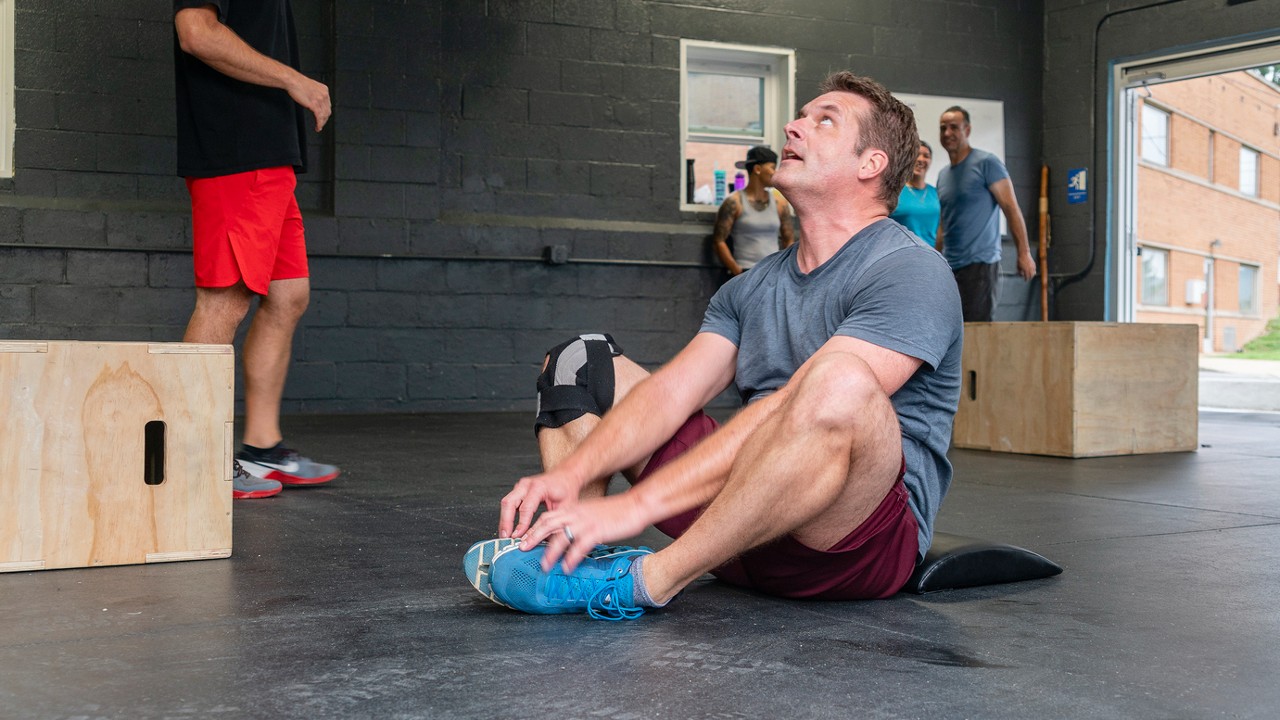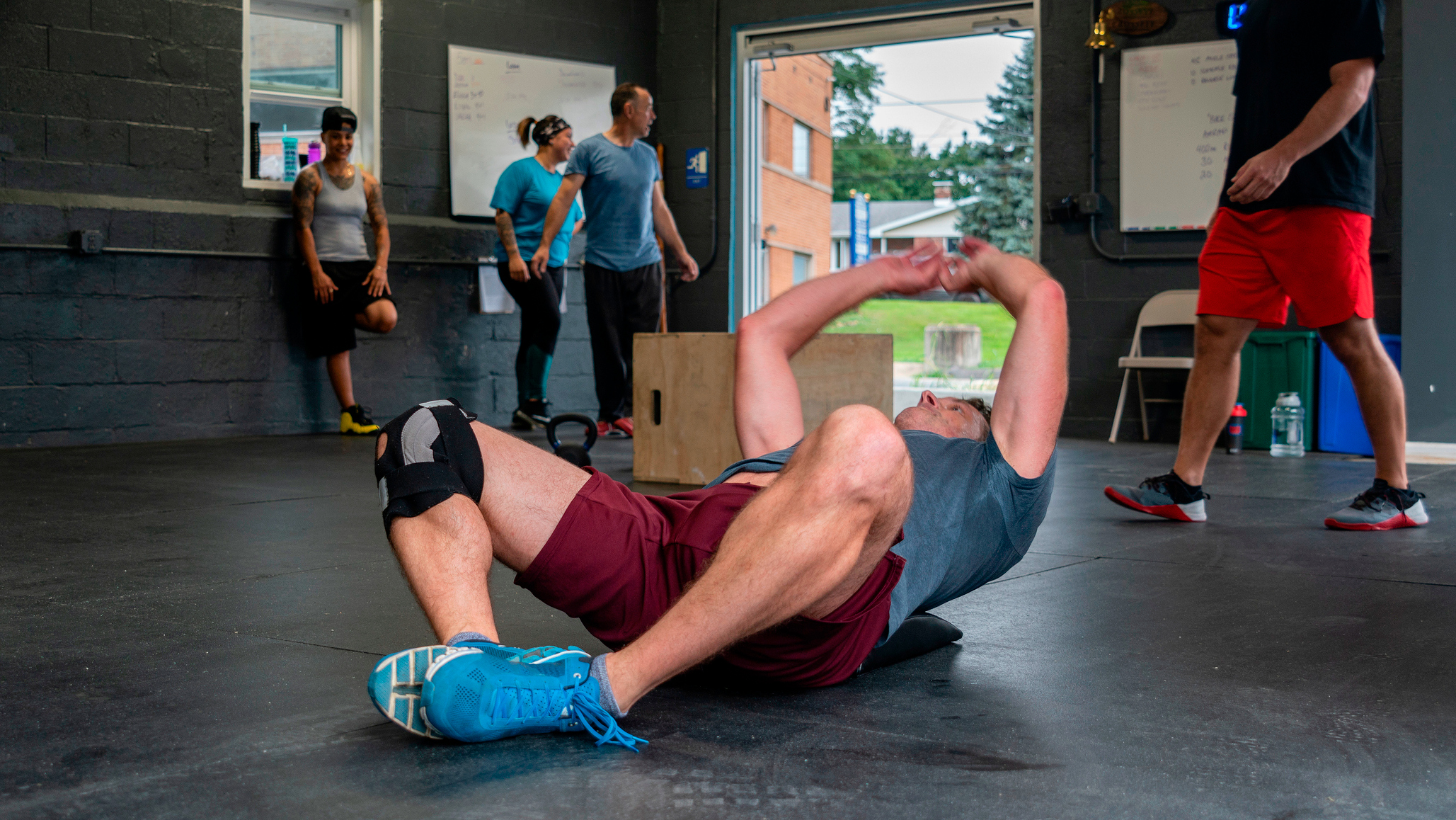How To Do A Butterfly Sit-Up
This sit-up variation shifts the focus from your hip flexors to your groin and is a great exercise to include in your core training

The traditional sit-up may have fallen out fashion to an extent, but its close relation the butterfly sit-up is a common sight in CrossFit gyms. That’s largely because the sit-up is often performed poorly, with people failing to engage their abs and relying on their hip flexors instead, but the butterfly sit-up takes your hip flexors out of the equation. The result? A more focused abs hit.
So should you swear off the sit-up forever? Not so fast, says Ryan Horton, a strength and conditioning coach and sports scientist with more than 20 years’ of experience, who we spoke to to get an expert take on promising abs exercise.
Is the butterfly sit-up better than the sit-up?
No, the two are complementary. Horton suggests you incorporate both the butterfly sit-up and the original movement in your routine and use it as a way to keep your training varied.
“A butterfly sit-up is going to be a little less hip flexor, a little more groin, but I would use it as a variation,” says Horton, who programs both into workouts for his high-performance clients.
“Typically I’ll have one or two days a week where our athletes work their core with a bodyweight circuit. It’ll be four or five bodyweight movements and we knock them out back to back at the end of a workout. This is a movement I would add into that.
“Or you could use it as a warm-up exercise. If you’re doing two rounds of six or seven moves to get ready for your workout, this is a great exercise to include for 10 reps. That way, you’ll get both the core and the groin warmed up.”
How To Do The Butterfly Sit-Up
“For a butterfly sit-up, I’m going to lie on my back and bring my feet together with my knees bent,” says Horton. “I’m going to let my knees fall out to the side like I’m doing a butterfly stretch.
“Then I’m going to use my abs to sit all the way up, then control myself back down. Rinse and repeat until all the reps are done.”
As with a standard sit-up, the position of your arms is secondary, but Horton recommends “putting your hands together, arms extended forward, so when you sit up you’re reaching through that empty void between the knees”. This way, you can tap the floor in front of your feet at the top of each rep, which ensures you’re moving through the full range of motion.
To increase the difficulty, Horton recommends bringing your hands behind your head at the bottom of each rep.
Butterfly Sit-Up Benefits
By letting your knees fall to the side, butterfly sit-ups “take the hip flexors out of the movement,” says Horton. Instead, it’s “the groin that’s having to engage and become a little more active in stabilizing the lower body as the upper body moves.
Get the Coach Newsletter
Sign up for workout ideas, training advice, reviews of the latest gear and more.
“The groin is something a lot of people overlook. A butterfly sit-up isn’t going to solve all your groin issues, but it is a variation that offers a little bit of extra groin engagement.”
However, this isn’t the main reason Horton uses butterfly sit-ups with his clients. He programs several core workouts a week for the athletes he works with and the appeal of the butterfly sit-up lies in the variety it offers.
“It can add freshness to your workout by being something a little bit different so you’re not doing the same thing over and over again,” says Horton, “even if it’s doing a lot of the same work and has the same benefits as the original exercise.
“From that standpoint, I think variations are always a good thing to throw into your workout.”

Which muscles are worked by the butterfly sit-up?
As with the sit-up, Horton says the rectus abdominis—the group of muscles on the front of the stomach, responsible for spinal flexion and the six-pack shape—is doing most of the work.
“But any sit-up is going to get everything in your core involved—it’s just a question of how much,” says Horton. “The rectus abdominis is going to be your prime mover, it is a spinal flexion movement, but your core and your hip flexors will all engage.”
About Our Expert
Ryan Horton is the owner of Horton Barbell. He began his career as a strength and conditioning coach in 2004, holding positions ranging from assistant coach to director of strength and conditioning at a number of US universities, including Temple University. Before opening Horton Barbell, he held the position of director of applied sports science with the Georgia Tech American football team. He graduated with a BA in exercise physiology from Otterbein University.

Harry covers news, reviews and features for Coach, Fit&Well and Live Science. With over a decade of training experience, he has tried everything from powerlifting to gymnastics, cardio to CrossFit, all in a bid to find fun ways of building a healthy, functional body.
